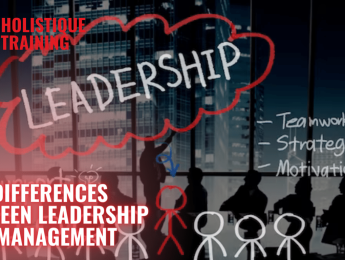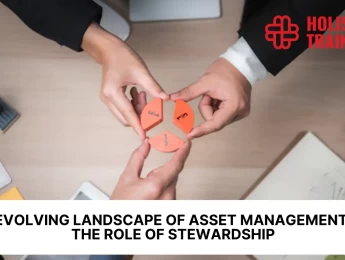- Table of Contents
- What Is Leadership?
- What Is Management?
- Key Differences Between Leadership and Management
- Focus on People vs. Focus on Tasks
- Inspiration vs. Direction
- Change vs. Stability
- Risk-Taking vs. Risk Mitigation
- Long-Term Vision vs. Short-Term Goals
- Influence vs. Authority
- Common Ground: Shared Qualities of Effective Leaders and Managers
- 1. Effective Communication Skills
- 2. Adaptability and Flexibility
- 3. Problem-Solving Acumen
- 4. Empathy and Emotional Intelligence
- 5. Strategic Thinking
- 6. Decision-Making Skills
- 7. Commitment to Continuous Learning
- How to Know If You’re a Manager or a Leader
- What Energises You?
- How Do You Handle Change?
- What Are Your Communication Patterns?
- How Do You Approach Problem-Solving?
- The Rise of Hybrid Roles: Leading and Managing in Tandem
- 1. Embracing Ambiguity and Complexity
- 2. The Need for Adaptive Leadership
- 3. Nurturing a Collaborative Ecosystem
- 4. Developing T-Shaped Professionals
- 5. Continuous Learning and Skill Enhancement
- 6. Building a Leadership Pipeline
- Conclusion
Introduction
In the world of business and organisations, the terms "management" and "leadership" are often used interchangeably, but they actually represent two distinct concepts with unique roles and characteristics. While both are essential for the success of any group, understanding the fundamental differences between management and leadership can significantly impact an individual's effectiveness in guiding a team towards achieving common goals.
What Is Leadership?
At its core, leadership is the art of inspiring and guiding a group of individuals towards a shared vision or goal. A leader isn't just someone who holds a title or a position; it's someone who possesses the ability to influence, inspire, and empower others to achieve their full potential. Leadership is about setting a direction, motivating others to follow that direction, and fostering an environment of innovation and growth.
Leaders often exhibit qualities such as vision, empathy, authenticity, and strong communication skills. They focus on the big picture, are willing to take calculated risks, and are open to new ideas and perspectives. A leader's success is measured not only by the results achieved but also by the positive impact they have on the people they lead.
What Is Management?
Management, on the other hand, revolves around the process of efficiently coordinating and organising resources to achieve specific objectives. Managers are responsible for planning, executing, and controlling tasks and projects to ensure that the organisation's goals are met within established parameters. While leadership is about inspiring and guiding, management is about organising and executing.
Managers are often associated with roles that involve decision-making, delegation, problem-solving, and process optimisation. They focus on the day-to-day operations, ensuring that tasks are completed on time, resources are allocated effectively, and processes are streamlined for maximum efficiency. A manager's success is typically evaluated based on their ability to deliver results and maintain operational stability.
Key Differences Between Leadership and Management
Understanding the nuances between leadership and management is essential for anyone looking to excel in their roles within organisations. While both concepts are integral, they manifest differently and serve distinct purposes. Let's delve deeper into these key differences to gain a more comprehensive understanding:
Focus on People vs. Focus on Tasks
Leadership is fundamentally centred around people. A leader's primary concern is the individuals they are responsible for guiding and inspiring. They invest time in understanding their team members' strengths, weaknesses, aspirations, and challenges. Through active listening and empathy, leaders build strong relationships and create an environment of trust.
On the other hand, management places a heavy emphasis on tasks, processes, and procedures. Managers are responsible for allocating resources, setting timelines, and ensuring that projects are executed efficiently. Their focus is on achieving specific goals and targets within established parameters.
Inspiration vs. Direction
Leaders are inherently inspirational. They possess the ability to ignite passion and enthusiasm within their team members by sharing a compelling vision of the future. A leader's vision serves as a North Star, guiding individuals through uncertainty and motivating them to contribute their best efforts. Effective leaders lead by example, demonstrating the values and behaviours they expect from their team.
Contrastingly, managers provide direction and guidance. They ensure that team members understand their responsibilities and the tasks at hand. Managers excel at breaking down large goals into actionable steps, ensuring that work is distributed efficiently and executed effectively.
Change vs. Stability
Leadership is often associated with driving change and innovation. Leaders recognise that standing still in a rapidly evolving world can lead to stagnation and irrelevance. They encourage their teams to think creatively, experiment with new ideas, and embrace change as a catalyst for growth. A leader's willingness to embrace uncertainty can inspire others to step out of their comfort zones.
Conversely, managers focus on maintaining stability and order. They are skilled at navigating through transitions while minimising disruptions to ongoing operations. Managers ensure that established processes are followed consistently, mitigating risks and maintaining a sense of predictability.
Risk-Taking vs. Risk Mitigation
Leaders are comfortable with taking calculated risks. They understand that innovation and progress often require stepping into the unknown. By encouraging risk-taking within a safe and supportive environment, leaders can unlock new opportunities and push the boundaries of what's possible. They lead their teams by example, demonstrating resilience in the face of setbacks.
In contrast, managers are cautious about risks and prioritise risk mitigation. They analyse potential pitfalls and plan contingencies to ensure that projects are completed successfully. Managers aim to minimise disruptions to ongoing operations and maintain a sense of stability.
Long-Term Vision vs. Short-Term Goals
Leadership encompasses a long-term perspective. Leaders are visionaries who think beyond immediate goals and focus on the organisation's trajectory over time. They set ambitious goals that might not yield immediate results but contribute to the organisation's sustainable growth and success.
Conversely, managers focus on achieving short-term objectives. They prioritise the completion of tasks within specified timeframes and ensure that immediate targets are met. Managers' effectiveness is often evaluated based on their ability to deliver results in a timely manner.
Influence vs. Authority
Leadership is built on influence rather than formal authority. A leader's ability to inspire and empower others is rooted in their authenticity, empathy, and ability to connect with people on a deeper level. Leaders lead by example and gain the respect and trust of their team through their actions and character.
On the other hand, management authority is often derived from one's position within the organisational hierarchy. Managers wield authority based on their role and responsibilities. While they make decisions and allocate resources, their effectiveness relies on their ability to efficiently manage tasks and processes.
In summary, the differences between leadership and management extend beyond surface-level distinctions. These concepts encompass unique mindsets, approaches, and skill sets that collectively contribute to the overall success of an organisation. Recognising the nuances between the two can empower individuals to tailor their actions, behaviours, and strategies to effectively guide teams, foster growth, and achieve both short-term objectives and long-term visions.
Common Ground: Shared Qualities of Effective Leaders and Managers
While leadership and management represent distinct roles with unique focuses, there exists a common ground where both leaders and managers converge in terms of qualities and characteristics. These shared attributes form the bedrock of effective organisational governance, fostering an environment where teams can flourish, and goals can be achieved. Let's explore the qualities that transcend the boundaries of leadership and management.
1. Effective Communication Skills
Both leaders and managers must excel in effective communication. The ability to articulate ideas, expectations, and feedback clearly is paramount. Whether conveying a compelling vision (for leaders) or providing precise instructions (for managers), the art of communication is the bridge that connects objectives with actions. A leader's inspiration and a manager's directions both require the finesse of articulate and resonant communication.
2. Adaptability and Flexibility
The modern business landscape is characterised by rapid changes, requiring both leaders and managers to be adaptable and flexible. Whether responding to market shifts, technological advancements, or internal restructuring, the capacity to adjust strategies swiftly is crucial. Leaders need to navigate uncertainties, and managers must ensure operational continuity during transitions, making adaptability a shared virtue.
3. Problem-Solving Acumen
Leaders and managers alike encounter challenges that demand astute problem-solving skills. While leaders foster innovative solutions and encourage creative thinking, managers analyse problems methodically and implement practical strategies. The ability to identify, address, and overcome obstacles is a shared competency that contributes to the overall effectiveness of both roles.
4. Empathy and Emotional Intelligence
Empathy and emotional intelligence are indispensable qualities for leaders and managers alike. Understanding the emotions, aspirations, and concerns of team members builds trust and strengthens relationships. Leaders inspire through empathetic connection, while managers create a positive work environment by acknowledging and supporting the emotional well-being of their teams.
5. Strategic Thinking
Strategic thinking is a cornerstone for effective leadership and management. Leaders formulate long-term visions and strategic goals, guiding the organisation towards sustainable success. Managers, in turn, contribute to strategy execution by aligning day-to-day operations with overarching objectives. The ability to think strategically is a unifying trait that ensures alignment between the macro vision and micro-level execution.
6. Decision-Making Skills
Both leaders and managers are confronted with decisions that significantly impact the organisation. Leaders make strategic decisions that shape the direction of the company, while managers make operational decisions that influence daily workflows. Sound decision-making, grounded in a deep understanding of the organisational context, is a shared competency that distinguishes effective leaders and managers.
7. Commitment to Continuous Learning
In a rapidly evolving business landscape, the commitment to continuous learning is imperative for leaders and managers alike. Staying abreast of industry trends, emerging technologies, and evolving management methodologies ensures that both roles remain relevant and effective. The pursuit of knowledge is a shared attribute that contributes to personal growth and organisational resilience.
Recognising the common qualities shared by effective leaders and managers is essential for cultivating a harmonious and synergistic organisational culture. By acknowledging and nurturing these shared attributes, organisations can create a dynamic environment where leadership and management seamlessly collaborate to achieve common goals. Whether guiding the vision or optimising processes, the integration of these qualities forms the basis for resilient and successful teams in the ever-changing landscape of the business world.
How to Know If You’re a Manager or a Leader
Determining whether you lean more towards management or leadership can provide valuable insights into your strengths and areas for development. Reflect on the following questions to gain clarity:
What Energises You?
Leaders find invigoration in inspiring and motivating others, nurturing growth, and envisioning a brighter future. Their passion lies in the development of people and the collective success of the team. A leader is fueled by the idea of creating an environment where each team member can thrive and contribute their best.
In contrast, managers derive satisfaction from the intricacies of organising tasks, optimising processes, and achieving tangible results. The thrill for a manager comes from efficiently executing plans, ensuring that tasks are completed with precision, and projects meet their deadlines. The joy lies in the successful orchestration of the operational symphony.
How Do You Handle Change?
Leaders embrace change as an opportunity for growth and innovation. They view uncertainty as a pathway to new possibilities and encourage their team to adapt and evolve. The discomfort of change is outweighed by the excitement of exploring uncharted territories and the potential for transformative outcomes.
On the other hand, managers excel at maintaining stability during times of change. They are adept at managing risks, analysing potential disruptions, and ensuring that operations continue to run smoothly. Managers find satisfaction in navigating through transitions without causing upheaval and maintaining a sense of order.
What Are Your Communication Patterns?
Leadership involves effective communication that inspires and engages others. If your communication style revolves around conveying a compelling vision and motivating action, you're leaning towards leadership. Conversely, if you excel at providing clear instructions, managing expectations, and ensuring tasks are executed efficiently, you're exhibiting management skills.
How Do You Approach Problem-Solving?
Leaders often encourage innovative problem-solving by fostering a culture of creativity and experimentation. If you're comfortable with taking calculated risks and encouraging your team to explore unconventional solutions, you're likely a leader. Managers excel at analysing problems, identifying efficient solutions, and implementing strategies to minimise disruptions.
In short, these reflective questions serve as a compass, guiding individuals to recognise their natural tendencies and strengths. Whether one identifies more with leadership qualities or managerial traits, it's important to understand that the best individuals often possess a blend of both. Recognising and embracing these unique qualities contribute to the dynamic fabric of any successful enterprise.
The journey of self-discovery in distinguishing between being a leader or a manager is not about limiting oneself to a specific role. Instead, it is an invitation to explore and enhance one's skills in both domains, creating a more versatile and effective professional. Whether you find yourself inclined towards inspiring visions or optimising processes, your unique qualities contribute to the intricate balance required for organisational success.
The Rise of Hybrid Roles: Leading and Managing in Tandem
In the ever-evolving landscape of modern organisations, there is a discernible shift towards the emergence of hybrid roles that seamlessly blend leadership and management qualities. This evolution is not a mere coincidence but a strategic response to the dynamic challenges and opportunities presented by the contemporary business environment. Some say that this shift to remote and hybrid workplaces is affecting leaders and managers negatively. However, statistics show that a significant majority, comprising 63% of leadership professionals, affirm that remote and hybrid work has exerted a substantial to exceptionally significant influence on the effectiveness of leadership. Now, let's delve into the intricacies of this paradigm shift and explore how individuals can cultivate a balance between inspiring vision and ensuring operational efficiency to thrive in these dynamic roles.
1. Embracing Ambiguity and Complexity
Hybrid roles are born out of the recognition that the traditional demarcation between leadership and management is becoming increasingly blurred. In today's complex and fast-paced business world, professionals are often required to navigate through ambiguity and tackle multifaceted challenges that demand a versatile skill set. Hybrid roles, therefore, call for individuals who can seamlessly transition between visionary leadership and pragmatic management based on the needs of the situation.
2. The Need for Adaptive Leadership
In a world where change is constant, adaptive leadership becomes crucial. Hybrid roles necessitate individuals who can not only envision a compelling future but also possess the agility to adjust their management strategies in response to evolving circumstances. This adaptive approach requires a keen understanding of the delicate equilibrium between fostering innovation and ensuring operational stability.
3. Nurturing a Collaborative Ecosystem
The synergy between leadership and management in hybrid roles fosters a collaborative ecosystem within organisations. Instead of viewing these two aspects as conflicting forces, organisations are recognising the symbiotic relationship between visionary leadership and effective management. This collaborative mindset permeates through teams, encouraging a culture where innovation is not hindered by processes, and operational efficiency is not compromised by a lack of direction.
Table 1: Characteristics of a Hybrid Leader-Manager
Aspect | Hybrid Leader-Manager |
Adaptability | Navigates ambiguity, adjusts strategies swiftly |
Collaboration | Fosters synergy between visionary leadership and efficient management |
Skill Set | T-shaped professional with depth and versatility |
Learning Culture | Commits to continuous learning and skill enhancement |
Leadership Pipeline | Organisations focus on building versatile leadership pipelines |
4. Developing T-Shaped Professionals
As hybrid roles become more prevalent, there is a growing demand for T-shaped professionals – individuals with both depth and breadth in their skill sets. This means having a profound expertise in a specific domain (the vertical bar of the 'T') and a broad understanding of various disciplines, allowing for versatility and adaptability (the horizontal bar of the 'T'). These professionals can seamlessly navigate between leading and managing, contributing to strategic initiatives while ensuring effective execution.
5. Continuous Learning and Skill Enhancement
According to McKinsey, leaders in various sectors recognise the significance of committing to continuous improvement, and hybrid roles are no exception when it comes to that. Thriving Individuals aspiring for such positions need to stay abreast of industry trends, leadership philosophies, and management methodologies. This dynamic skill development not only enhances personal growth but also contributes significantly to the organisation's ability to stay innovative and competitive.
6. Building a Leadership Pipeline
The rise of hybrid roles necessitates a strategic approach to leadership development. Organisations are now focusing on building a leadership pipeline that emphasises the cultivation of both leadership and management skills. This ensures a steady supply of professionals capable of navigating the complexities of the modern business landscape.
In short, the rise of hybrid roles signifies a paradigm shift in how organisations conceptualise leadership and management. Embracing the duality of leading and managing in tandem is not a compromise but a strategic advantage in a world where adaptability and innovation are paramount. Professionals aspiring to thrive in these roles must cultivate a mindset that seamlessly integrates visionary leadership with efficient management, contributing to the agility and success of their organisations in an era of constant change. As we navigate the future of organisational leadership, the ability to lead and manage in tandem emerges as a hallmark of resilient and forward-thinking professionals.
Conclusion
While both leadership and management are crucial for organisational success, they operate in distinct ways with different focus areas. The best leaders often possess a blend of both qualities, leveraging their ability to inspire and guide while efficiently managing processes and tasks. Recognising your natural tendencies and strengths can help you determine the most effective role you play within a team or organisation. Whether you're a visionary leader, a meticulous manager, or a combination of both, your unique qualities contribute to the dynamic fabric of any successful enterprise.
























